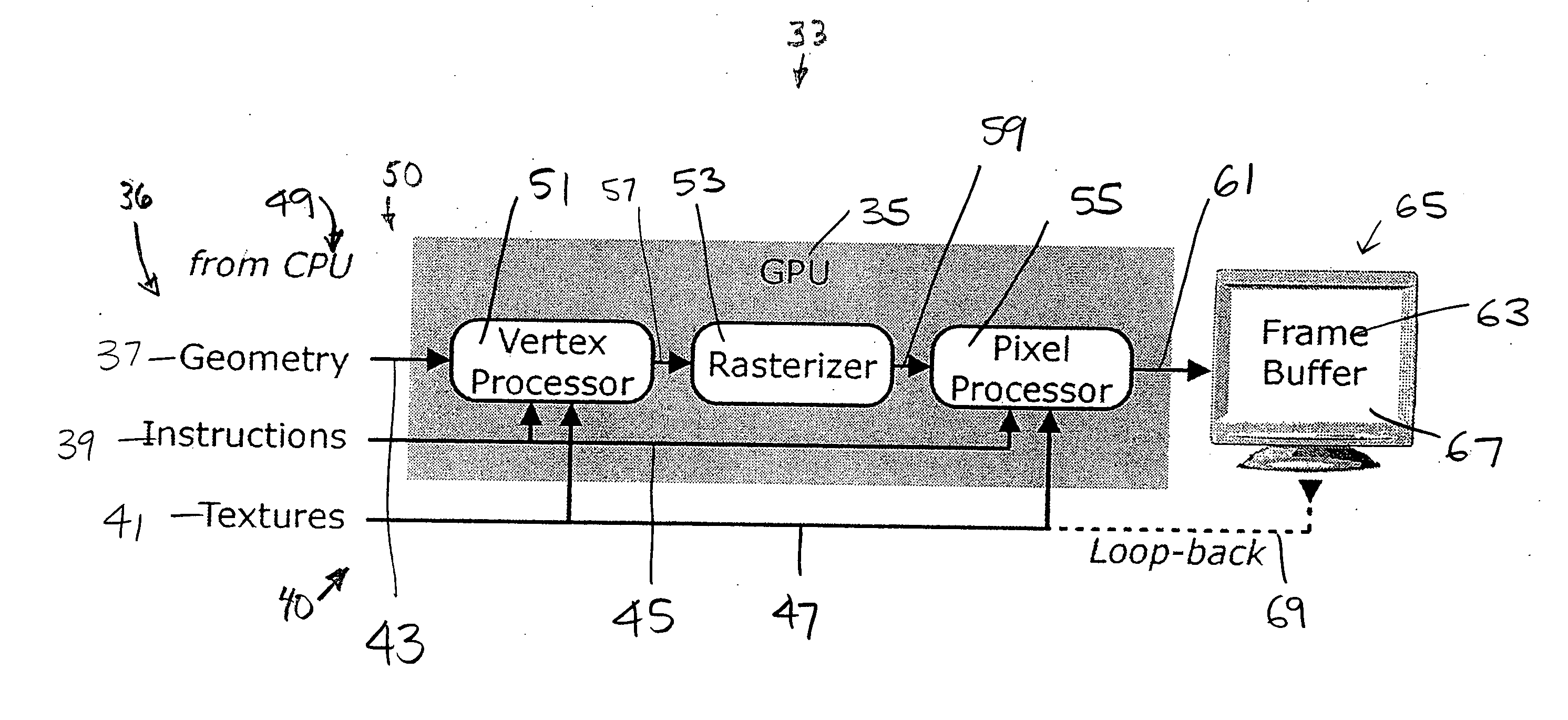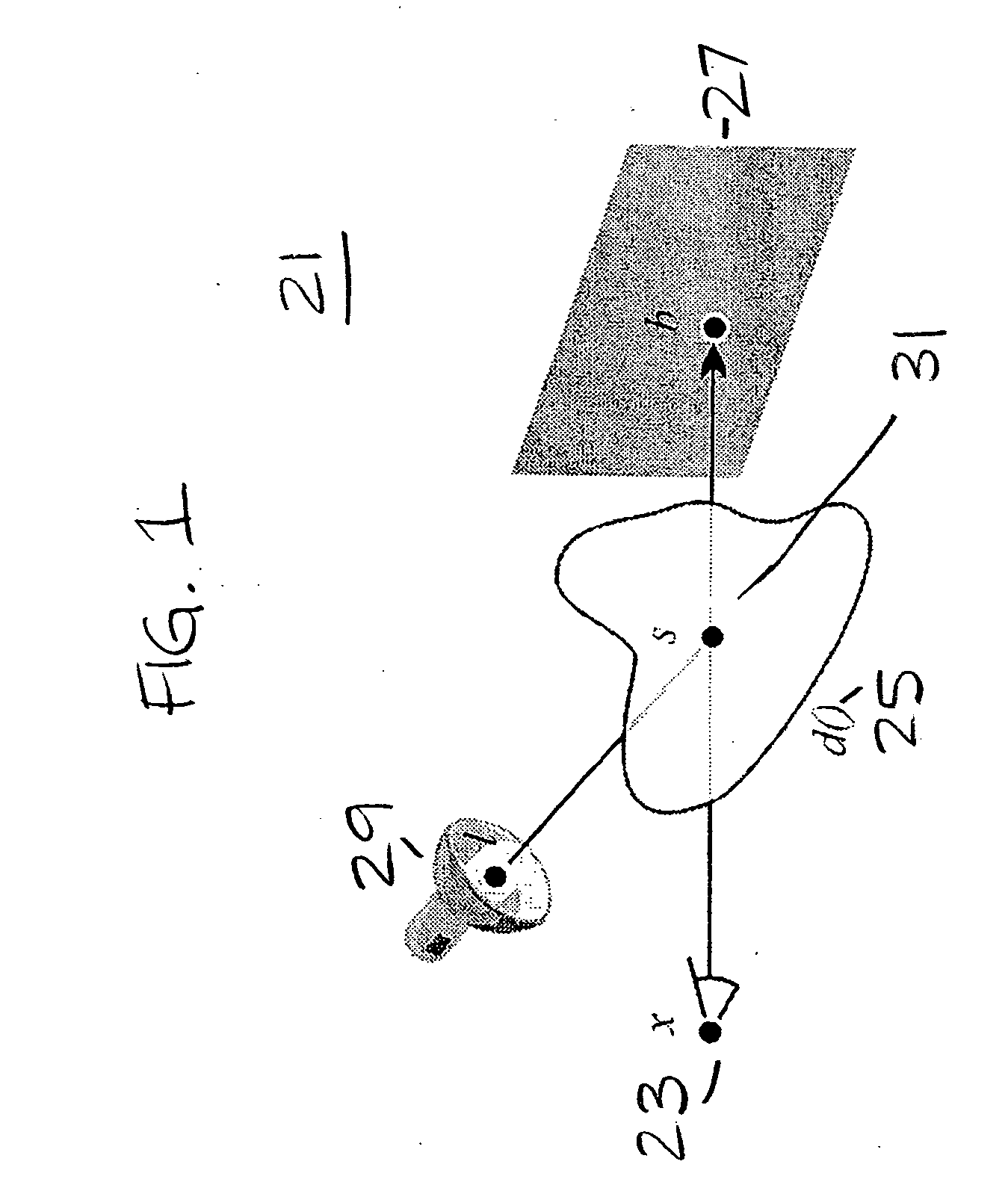Computer modeling and animation of natural phenomena
a computer modeling and natural phenomenon technology, applied in the field of computer modeling and natural phenomena, can solve the problems of producing amorphous peculiarities otherwise difficult to realistically shape by hand, and achieve the effects of improving gas rendering efficiency, reducing resolution, and enhancing realistic user interaction
- Summary
- Abstract
- Description
- Claims
- Application Information
AI Technical Summary
Benefits of technology
Problems solved by technology
Method used
Image
Examples
Embodiment Construction
[0045] One embodiment of the present invention includes a Graphics Processing Unit or GPU (termed herein also Visual Processing Unit, or “VPU”), is the microprocessor of a graphics card (or graphics accelerator) for a personal computer or game console. Modern GPUs are very efficient at manipulating and displaying computer graphics, and their highly-parallel structure makes these components more effective than typical Computer Processing Units (“CPU”) for a range of complex algorithms.
[0046] Embodiments of the present invention utilize modern graphics hardware acceleration, whose architecture may shape the design and subsequent limitations of each technique's implementations. Hardware-based graphics acceleration currently has evolved from handling 2D pixel blitting (copying and setting the graphical frame buffer) to geometry rasterization and texturing.
[0047] A GPU can implement a number of graphics primitive operations in a way that makes running them much faster than drawing dire...
PUM
 Login to View More
Login to View More Abstract
Description
Claims
Application Information
 Login to View More
Login to View More - R&D
- Intellectual Property
- Life Sciences
- Materials
- Tech Scout
- Unparalleled Data Quality
- Higher Quality Content
- 60% Fewer Hallucinations
Browse by: Latest US Patents, China's latest patents, Technical Efficacy Thesaurus, Application Domain, Technology Topic, Popular Technical Reports.
© 2025 PatSnap. All rights reserved.Legal|Privacy policy|Modern Slavery Act Transparency Statement|Sitemap|About US| Contact US: help@patsnap.com



